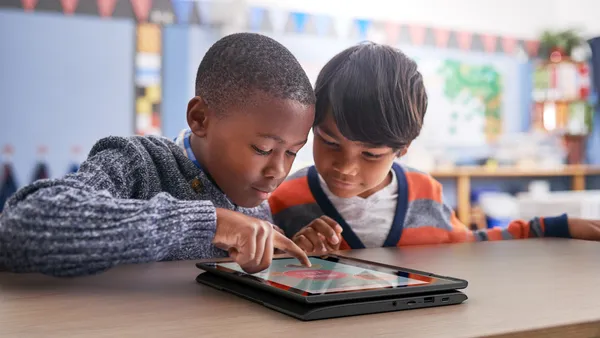Blended learning is an important building block of education that offers students both flexibility and convenience in terms of learning. When planning to teach in this environment, community should be a critical consideration for both in-person and online spaces. Without community, learning becomes less enjoyable and relatable to students, often leading to a lack of engagement. So how can educators create blended learning opportunities that integrate the community and the immediate environment into their teaching approach? The answer is simple: community-based learning (CBL).
In this blog, we look at three simple steps to help create effective CBL programs.
What is community-based learning?
Community-based learning is a pedagogical strategy that combines traditional learning with community engagement. With CBL, students are able to develop a deeper understanding of course content by connecting concepts with their practical application in the community that surrounds them.
Successful implementation of CBL is based on a strategic partnership between educators, students, and community stakeholders. The use of this model not only helps develop strong relationships between a school and its community, but it also helps community members provide students with valuable learning experiences.
Three steps to integrate community-based learning
Community-based learning programs are coordinated between different stakeholders. The three interrelated components below provide an outline for developing effective CBL programs.
1. Strategic planning between schools and community partners
Integrating a learning model into any course requires planning. This applies especially to community-based learning, as these programs require strong collaboration between community partners. The first step in implementing CBL is to develop relationships with local community partners. Next, the community partners and educators must have a clear understanding of what this learning model will look like across stakeholders.
There are different ways to integrate CBL into a classroom. Some of the pedagogical formats include:
- Instructional Connection: This form of CBL consists of educators making connections between class materials within a community context. For example, explaining concepts by looking at local businesses or ecosystems.
- Community Integration: This brings the community into the classroom and the classroom into the community. This form of CBL can be achieved by inviting community members to lead a class or to mentor students. Teachers can also plan visits to local businesses to learn what has been discussed in the classroom.
- Community Participation: This is often used for students who are in higher grade levels. This type of CBL consists of educators and students being collaboratively engaged with the community in research to solve a problem or create social change.
Creating CBL programs means taking a collaborative approach to planning and designing classes. Community partners need to be part of the strategic planning to ensure student learning experiences are enhanced in a local context.
2. Thoughtful integration of learning activities
Once you have worked with the community and decided on the pedagogical format that works best for you and your students, the second step is to thoughtfully integrate learning activities into your class. In a blended environment, this means combining traditional face-to-face learning with online strategies so that teaching takes place in both the classroom and online. Here, the online portion functions as an extension of traditional classroom learning or vice versa.
With community-based learning, the face-to-face portion may consist of having students take part in community service or having someone from the community such as a local business owner lead a class. Meanwhile, the online portion works to complement the in-person instruction. Educators can arrange their classes in ways where students engage in reflective learning activities online or complete assessments based on what they learned in class or in the community.
3. Opportunities for meaningful reflection
An important component for CBL is to create opportunities for students to participate in reflective thinking that helps transform experience into learning. A high-quality CBL program encourages students to participate in reflection before, during, and after a community experience to engage in continued learning and acting. This goes hand in hand with the second step of integrating learning activities.
Used in conjunction, reflection and integration can help students thoughtfully analyze their own observations and experiences. For example, this could consist of having students keep a journal in which they write about what they learn or participating in reflection assignments during which students place their experience in a larger context.
Equally important are opportunities for reflection for educators, school leaders, and community partners. Stakeholders should regularly reflect on how students are meeting learning requirements such as grasping class materials, learning new skills such as higher-order thinking, and managing emotions.
Creating a blended learning environment using D2L Brightspace
There are various blended learning models that can support community-based learning, but all of them incorporate the effective use of technology in an instructional setting to elevate the student experience.
Utilizing a digital space to support face-to-face learning continues to be an integral part of a modern learning experience. D2L Brightspace is a robust and secure online learning platform for blended learning experiences that help all students reach their potential.
Learn more about Creating a Blended Learning Environment Using D2L Brightspace.










